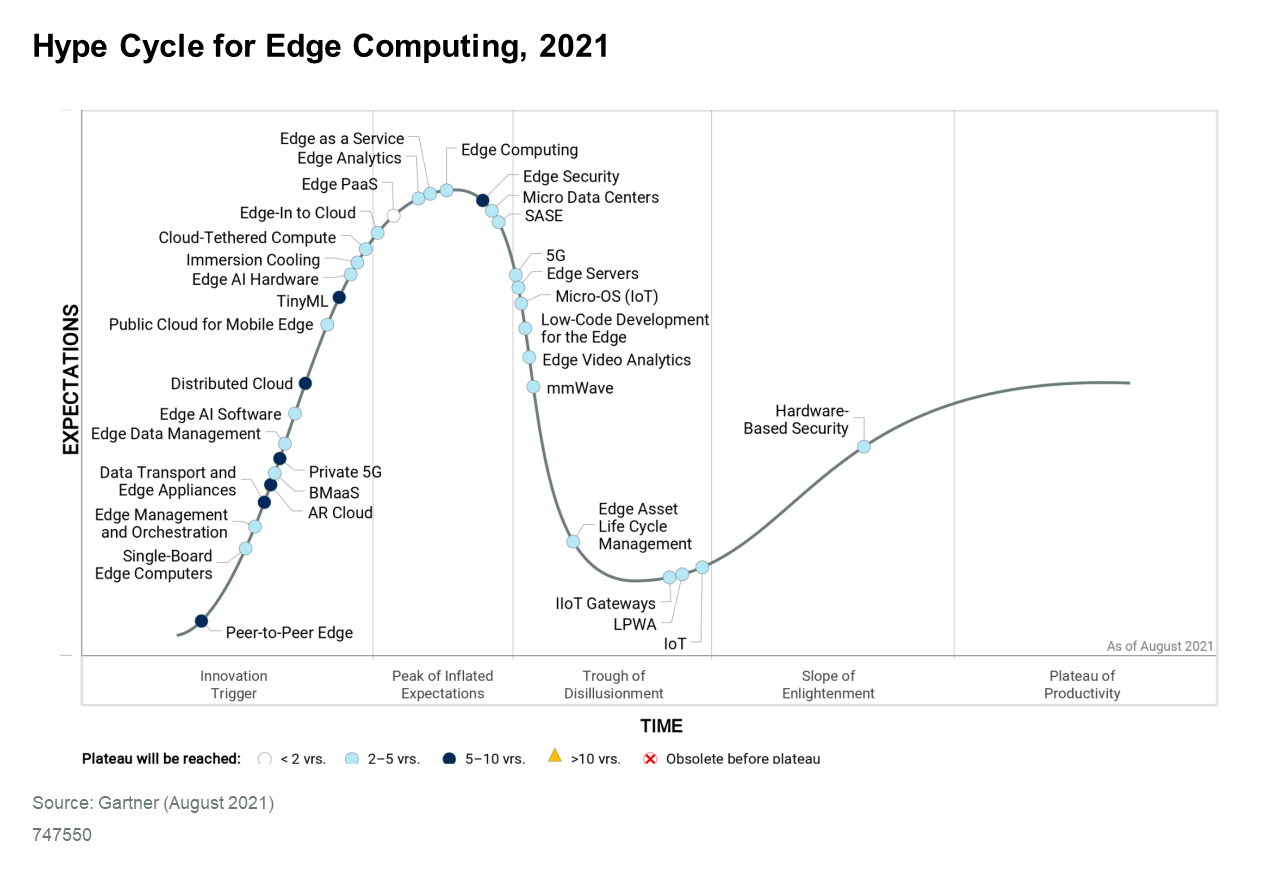Digital transformation as it relates to cloud computing has been in full force over the last couple of years but very few are prepared for the upcoming shift to edge computing. Truly innovative leaders in industrial, automotive, and consumer organizations have already begun to recognize the impact of edge computing — as seen in Gartner’s “Hype Cycle for Edge Computing” from August 2021, shown below.

Edge computing as a whole is quite broad.
While certain categories like edge servers, IoT gateways, and 5G are generally known and have been made a part of deployment initiatives like Factory 4.0 or other digital transformation focus areas, other subsets of “edge” like edge AI hardware or tinyML (tiny machine learning) are on the cusp of innovation.
Companies like Google, Amazon, and Apple are already putting machine learning algorithms into smaller, constrained hardware for smart home and consumer applications like wake words and glass break detection. Cell phone manufacturers have been doing this for years. In the next shift of edge computing, machine learning will go into real-time applications in industrial environments for applications such as quality control, predictive maintenance, and augmenting human-in-the loop operations.
As the number of connected devices in industrial environments begins to exponentially grow, organizations will struggle to keep up with large amounts of raw data that must be analyzed and leveraged to derive useful insights.
As Cardinal Peak says, more applications will require real-time decision making and the cloud will struggle to keep up due to its latency in providing back intelligence to the end user or operator. Gartner goes so far as to say that more than 75% of enterprise data will be created and processed outside of the data center or cloud over the next 5 years.
The reality will likely be that most companies need to adopt and execute on a hybrid edge to cloud strategy, if they have not already. Some intelligence and compute-related tasks will make sense to keep in the cloud, especially big data related problems such as analyzing financial transactions or monitoring cybersecurity related activities. Other operational challenges will require real-time insights, like developing audio-based AI algorithms to detect a piece of obstructed or damaged machinery, which can be used to shut the machine off.
But executing an edge to cloud strategy is multi-faceted and will need to account for the various emerging yet rapidly growing trends such as tinyML, edge machine learning, and edge AI hardware.
If business leaders focus only on checking a box, and are content with simply purchasing and deploying edge compute platforms like gateways or local server environments for processing data outside of the cloud, they will rapidly fall behind competition over the next few years.
Those leaders who recognize the criticality of a full edge to cloud strategy will be the leaders whose companies will have the most efficient manufacturing operations, the most innovative new products on the market, and the most secure edge-to-cloud IT infrastructure.
The leaders who dismiss edge as all hype, while failing to recognize the diversity of edge computing applications, such as edge data management, edge AI or tinyML, will be the ones left scratching their heads at where they went wrong.
In the next article, we will explore the considerations of edge computing from an IT perspective — follow us on LinkedIn to get updated when it posts.
